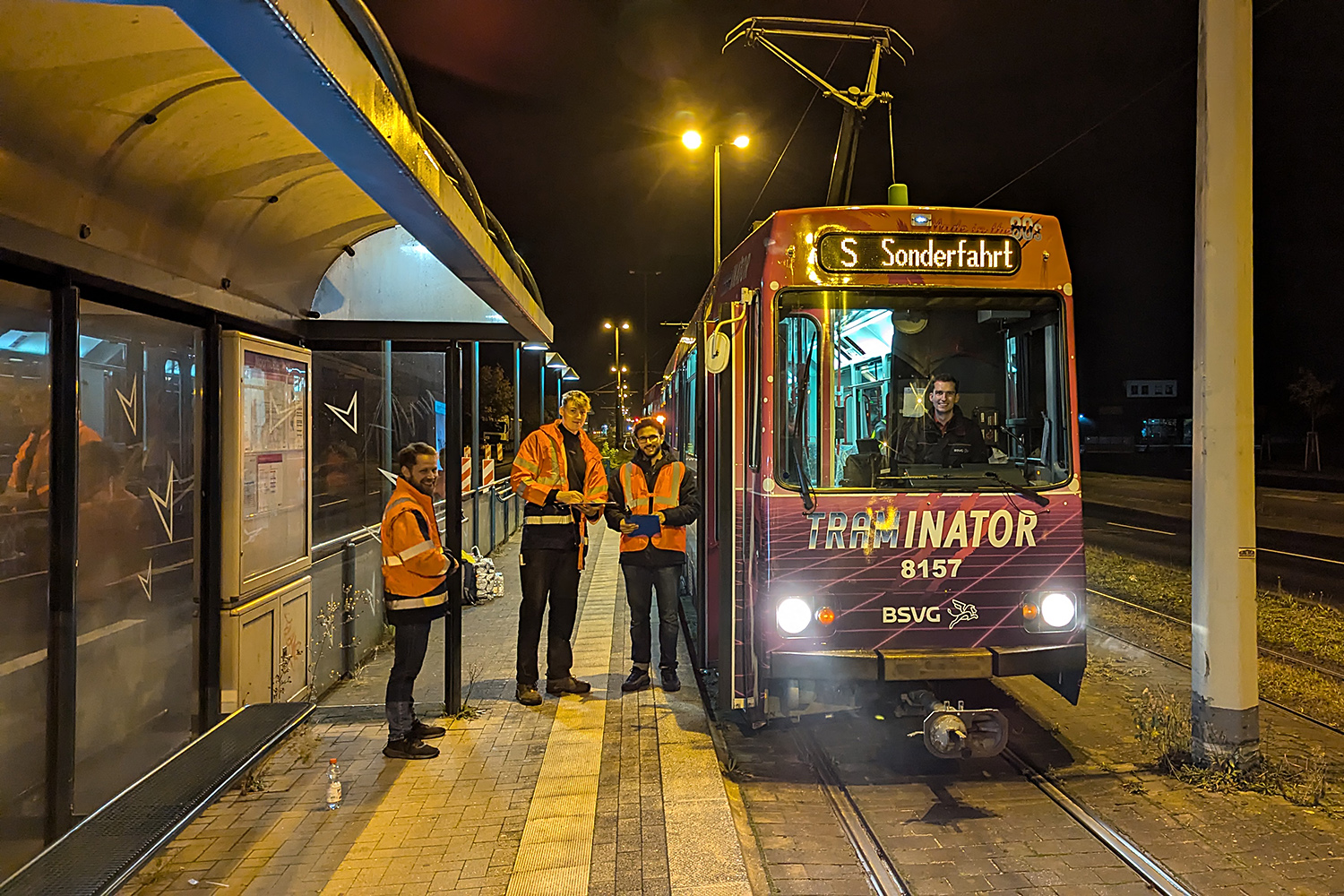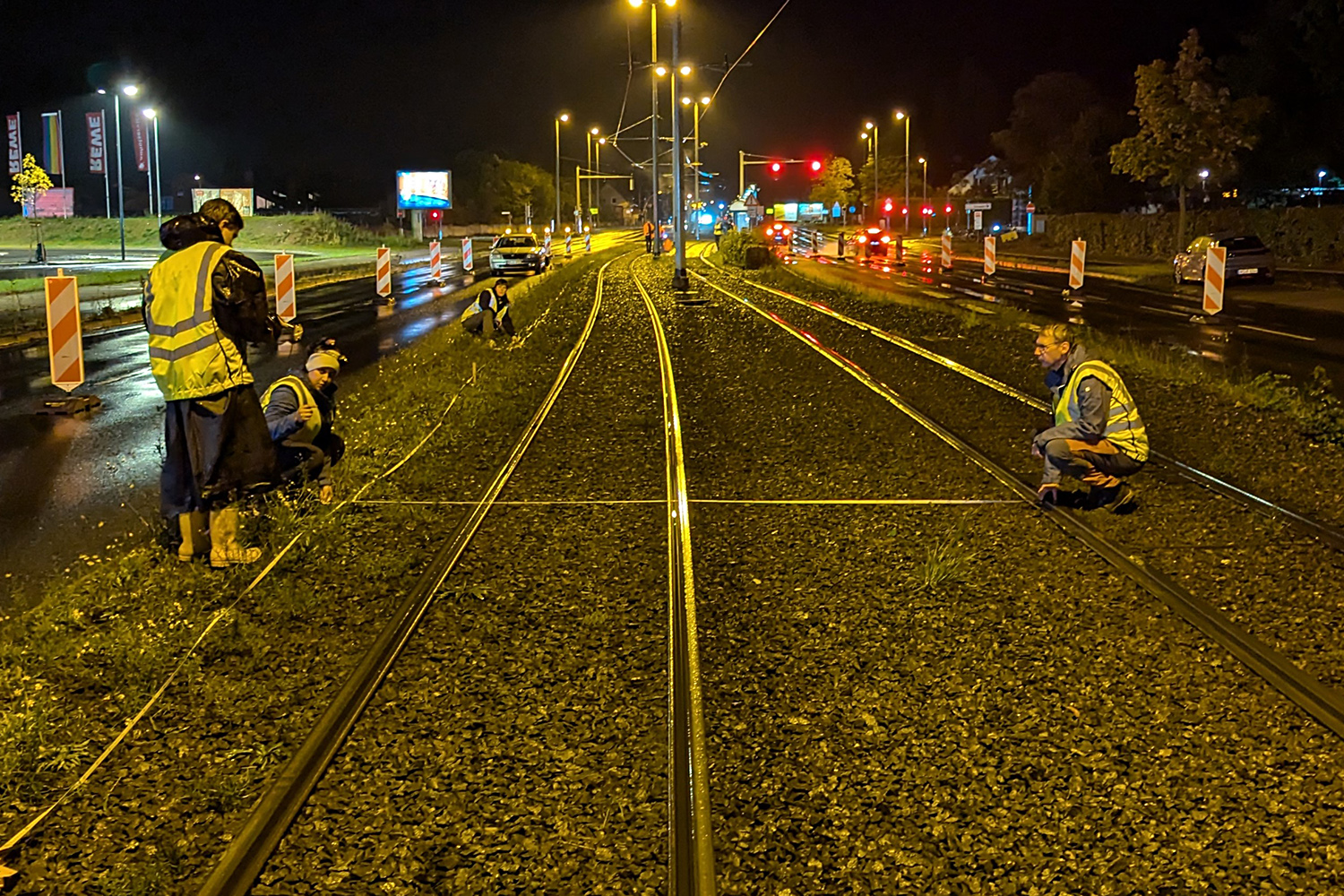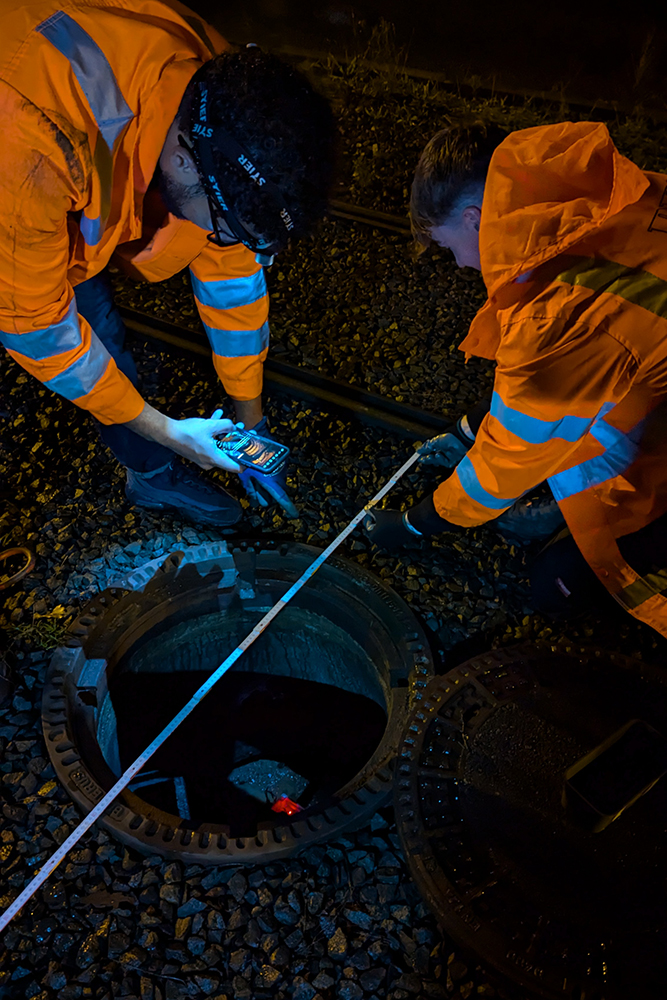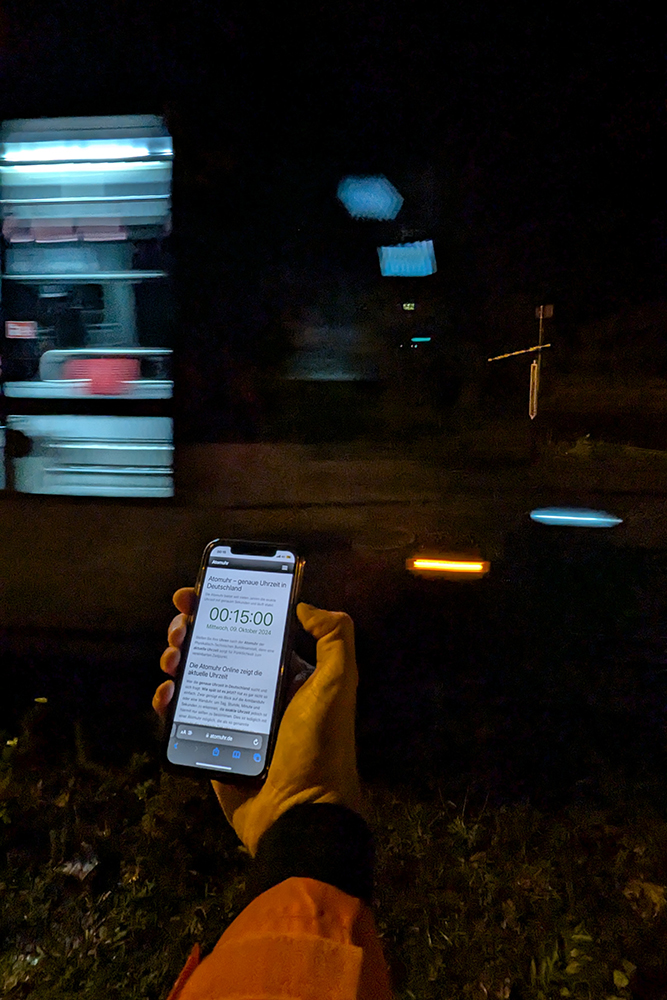‘Traminator’ in research mode Tram test runs for better and quieter tracks
An unusual spectacle recently took place on the last section of tram line 3 in Braunschweig. A 1981 tram, also known as the ‘Traminator’, was relentlessly driving up and down with its hazard warning lights permanently on. The scene was surrounded by several people in high-visibility vests accompanying the tram. However, no heavy construction machinery was to be seen or heard. The ‘Traminator’ was in research mode that night. During the test runs, Technische Universität Braunschweig, the German Aerospace Centre (DLR) and BSVG examined different track types in order to make recommendations for future railway lines.

The test vehicle with part of the team on a special trip in Volkmarode. From left to right: Benjamin Baasch (DLR), Robin Radtke (bachelor’s student), Mohammed Al-Salami (bachelor’s student) and Jan Peter Heemsoth (IVE & BSVG). Photo credits: IVE/TU Braunschweig
In 1994, new types of superstructure were installed on the section between Petzvalstraße and Moorhüttenweg in Braunschweig to test their damping effect on the surrounding buildings. At that time, seven test sections were equipped with different types of superstructure on the outbound track, while the standard superstructure was installed on the inbound track. The superstructure consists of rails, sleepers and ballast or the load-bearing concrete slab. The aim of the measurements was to find out how much the different construction methods could reduce vibrations in the surrounding buildings in the long term.
The measurements were repeated on a mass-spring system (MFS) on a 30-cm concrete trough covered with gravel, and on three different versions of the KES ‘Ortwein system’ with head or grooved rails, 30 or 40 cm of concrete covered with gravel or cobblestones.
Extension of the Volkmarode line
After almost 30 years, the next major inspection was due, as the track section is soon to be renewed and rebuilt as part of the Volkmarode line extension. The Institute of Transport, Railway Construction and Operation (IVE) and the Institute of Geophysics and Extraterrestrial Physics (IGEP) at TU Braunschweig, together with DLR and BSVG, carried out extensive measurements to gain insights into the long-term effects of the different types of superstructure.
The ‘Traminator’ was chosen for this research – a vehicle that had already been used for comparison and measurement runs on this route in 1994 and 2006. In the late evening, extensive measuring equipment was installed on three of the seven test sections. Shortly after the end of regular services, at around 12:30 am, a series of eight test runs began, with the vehicles travelling at different speeds in both directions.

The team around Professor Andreas Hördt (right) sets up another measurement along the track. Photo credits: IVE/TU Braunschweig
Reducing railway vibrations
The data collected will now be analysed by the students and scientists involved. By early 2025, the researchers hope to have a first insight into the long-term effects of the different types of superstructure. The results will form the basis for recommendations on how to design future railway lines in such a way that railway vibrations are minimised and residents are not disturbed by rattling trams.
The results are expected to be presented to an expert audience at the Stadtbahnforum in Braunschweig on 6-7 May 2025.


